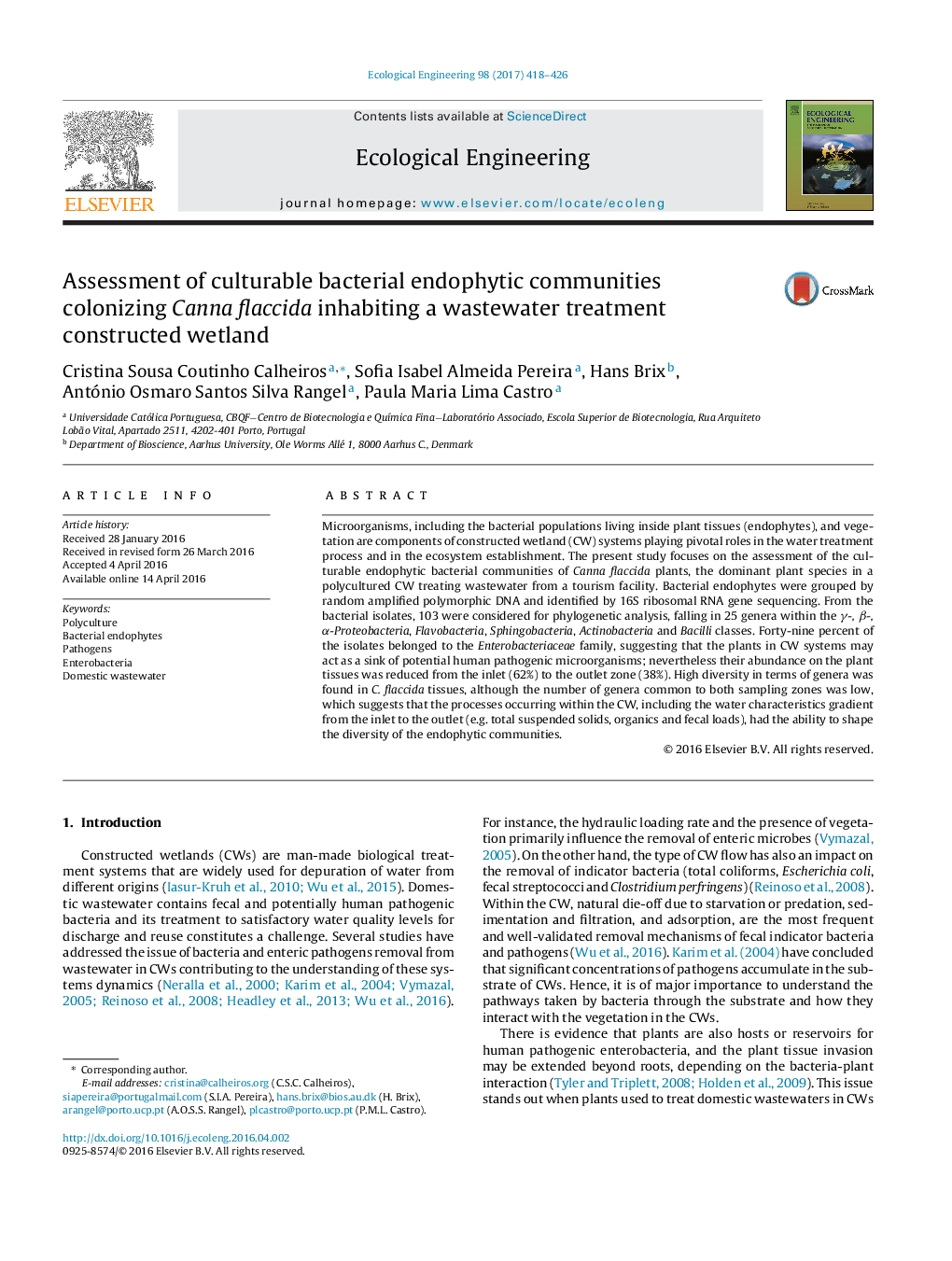| Article ID | Journal | Published Year | Pages | File Type |
|---|---|---|---|---|
| 5744045 | Ecological Engineering | 2017 | 9 Pages |
Microorganisms, including the bacterial populations living inside plant tissues (endophytes), and vegetation are components of constructed wetland (CW) systems playing pivotal roles in the water treatment process and in the ecosystem establishment. The present study focuses on the assessment of the culturable endophytic bacterial communities of Canna flaccida plants, the dominant plant species in a polycultured CW treating wastewater from a tourism facility. Bacterial endophytes were grouped by random amplified polymorphic DNA and identified by 16S ribosomal RNA gene sequencing. From the bacterial isolates, 103 were considered for phylogenetic analysis, falling in 25 genera within the γ-, β-, α-Proteobacteria, Flavobacteria, Sphingobacteria, Actinobacteria and Bacilli classes. Forty-nine percent of the isolates belonged to the Enterobacteriaceae family, suggesting that the plants in CW systems may act as a sink of potential human pathogenic microorganisms; nevertheless their abundance on the plant tissues was reduced from the inlet (62%) to the outlet zone (38%). High diversity in terms of genera was found in C. flaccida tissues, although the number of genera common to both sampling zones was low, which suggests that the processes occurring within the CW, including the water characteristics gradient from the inlet to the outlet (e.g. total suspended solids, organics and fecal loads), had the ability to shape the diversity of the endophytic communities.
Graphical abstractDownload high-res image (269KB)Download full-size image
